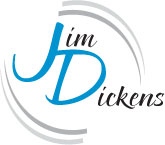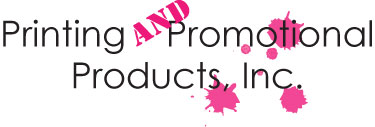Bleed – In
printing, the extension of the image beyond the trimmed edge or edges
of the page.
Camera Ready Art – Art fully prepared
for camera reproduction according to the requirements of the printing
process selected. Camera Ready Art is black and white art that is
clean, color separated, sized to fit and ready to be shot without retouching.
Color Separations – The process of
separating full color artwork and photographs into the four color components
needed to create Process Color.
DPI – The abbreviation for “dots per inch.”
A 300 dpi printer, for instance, is capable of printing 300 dots across
and 300 down within one inch square. DPI is a measurement of resolution
for scanning, displaying, or printing.
Digital Printing - A type of printing which
uses digital imaging process that transfers the image directly onto plain
paper immediately, without traditional offset rollers and plates.
EPS - (EPSF) Encapsulated Postscript File.
A vector based, computer graphics file format developed by Adobe Systems.
EPS is the preferred format for many computer illustrations, because of
its efficient use of memory and fine color control.
Full Color – A color model that is based
on four colors: Cyan(C), Magenta(M), Yellow(Y) and Black(K) and is also
referred to as CMYK. This model is the basis for all full color printing.
Full color printing is used for photographs. Full color is also known
as Four Color Process, Process Color or Four Color.
Gripper Edge – This is a margin on a page
3/8” wide that must be left blank so that the printer has an area to grip
the page as it passes through the press.
Halftone – An optical illusion of a continuous
tone where a dot pattern is used to trick the eye into seeing shades of gray.
Most halftones are one-color halftones, printed with black ink on white paper.
By blending the black of the tiny ink dots and the white of the paper, the
human eye sees shades of gray.
JPEG/JPG - Joint Photographic Electronic
Group. A common standard for compressing image data. Common to refer to
electronic images like photos as jpegs. Typically are low resolution for
web use or transferring via e-mail. Low resolution jpegs cannot be used
in professional printing.
PDF - A short form for Portable Document
Format, a file format developed by Adobe Systems. PDF captures formatting
information from a variety of desktop publishing applications, making it
possible to send formatted documents and have them appear on the recipient's
monitor or printer as they were intended. To view a file in PDF format,
you need Adobe Acrobat Reader, a free application distributed by Adobe
Systems.
PMS – A term frequently used to refer to
the colors in the Pantone Matching System®.
Pantone Matching System® - The Trade name
for a color-matching system used by printers to specify inks for printing.
A specific formula is used to produce each shade, and each shade is assigned
a specific number. Often referred to as “PMS”.
Pixel – The smallest, most basic component
of an image on a display screen. A pixel is comparable to an individual
dot in a printed photograph. The number of pixels in an image determines
its resolution.
Prepress – The process of taking your materials,
ideas and expectations and preparing them for printing. Can be involved,
expensive and is definitely something you should consult with your printing
specialist.
Proof – A sheet of printed copy that is
a representation of a printed piece.
Register – The placement of one image in
the precise position over the next image to achieve correct alignment.
Screen Printing - A printing process also
called silk screening, where ink is transferred through a porous screen,
such as nylon, onto the surface to be decorated. An emulsion or stencil
is used to block out the negative, or non-printing areas of the screen.
A squeegee forces ink through the open areas of the screen and onto the
paper, plastic, cardboard, wood, fabric, glass, or other material.
Spot Color - Single colors applied to printing
when process color is not necessary (i.e. one, two and three color printing)
TIFF - Tagged
Image File Format, a bitmapped file format used for the reproduction of
digitally scanned images such as photographs, illustrations & logos.
![]()
![]()





